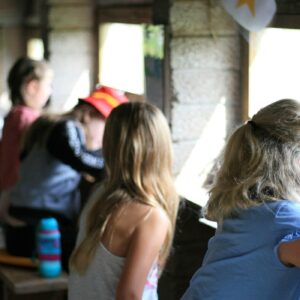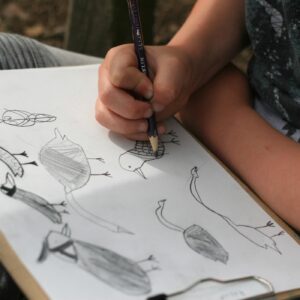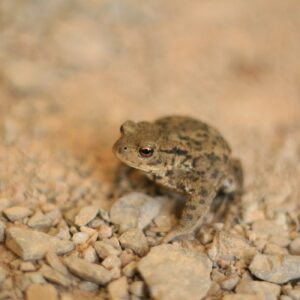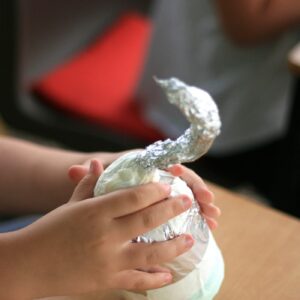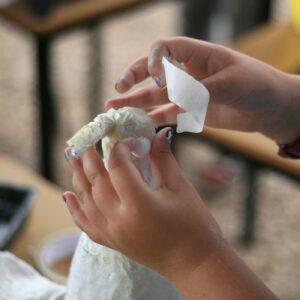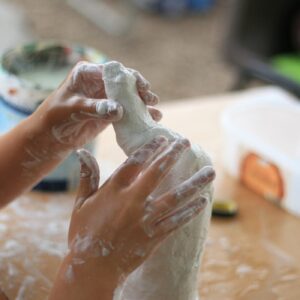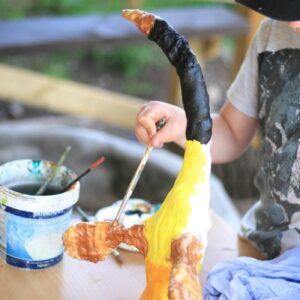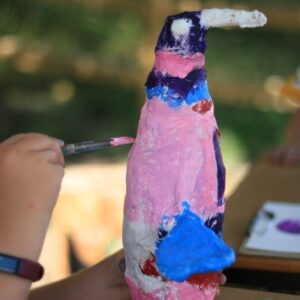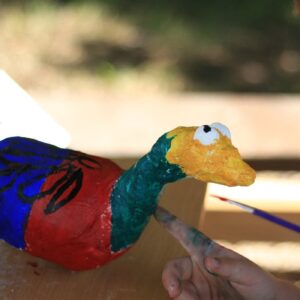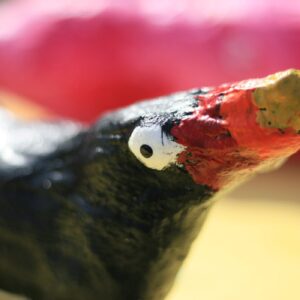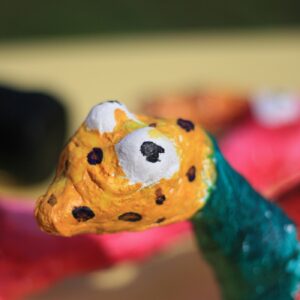Working from Murton Trust gave me the perfect opportunity to repeat one of the workshops I ran earlier this year – one which really inspired the children, and as the idea came from them it was extra special! The Problem with Plastic workshop was a great opportunity for the children to raise awareness of the impact plastics are having on our environment – and the project even made it into the local press!!
The Nature Reserve at Murton is teeming with a variety of flora and fauna, and I adapted this workshop to make full use of the wildlife which reside on our doorstep to inspire the creation of the sculptures.
We started off the Art Camp by looking at images on the iPad of the variety of wildlife that visit and reside in Murton – this included Shell Ducks, Greenfinches, Lapwings, Little Ringed Plovers and Snipes. We also looked at the Butterfly Conservation information leaflet for Tayside which gives full details of species of butterflies which can be found in the area and we talked about the Big Butterfly Count which is a nationwide survey aimed at helping us assess the health of our environment. Then we set off exploring to see what we could find for ourselves. We spent time at one of the bird hides and a viewing area on the nature reserve that offered us wonderful view across the water. We were able to apot a number of butterflies as well as watch and sketch the birds as they fed, played and squabbled!! And those geese know how to squabble! After spending a good amount of time watching, drawing and talking about the birds, we took our ideas back to the Tipi area and started the making – where we found a little visitor waiting for us – a curious little frog!
I demonstrated various processes that could be used with plastic bottles, tin foil, tape, wire and modroc to create shapes and form. The children were then invited to start creating, using the sketches they had made as well as drawing on their own imagination and artistic license.
The children all chose a bottle that suited their ideas and designs – some chose tall bottles for birds standing up, others chose ones suitable for making the birds look as though they were swimming in the water. They added wire and moulded shapes with the foil to create long necks, beaks, tails and wings. Each bird was given a proper ‘meal’ before we started to make them rice to fill their tummies, rather than the horrible plastics our wildlife have been eating. . . these give the birds weight to give them a good solid support, as well as making a lovely sound when shaken!
The foil is a very malleable material and is easy for little hands to work with. Once happy with the shape of their bird – they were all encouraged to pay close attention to the shapes and features of their designs – the birds were covered in masking tape to make everything secure and a more solid shape. Then the mod-roc was added – we wrapped our little birds up with this fantastic material. This not only gives them extra strength as the plaster is really quite hard when it is dry, but it also gave the young creatives chance to refine the shape of the their birds. The children loved this stage – great fun, and masses of quiet concentration as they create their shapes
After all the hard work the children deserved a break, and as we enjoyed lunch, the birds enjoyed a spot of sun bathing so they could dry ready for the final stage – painting. The young creatives revisited their original designs, and developed these ideas further by adding colour and patterns. Then they started the painting – carefully creating a base coat to which details were added, such as stripes and spots and colourful crests and beaks.
The finished results were amazing – the children worked so hard to create their sculptures and each one made a unique and colourful creation. From ducks and geese to flamingos! And although the latter is not exactly resident at Murton, who can deny such a fantastically imaginative response to this very special place!
